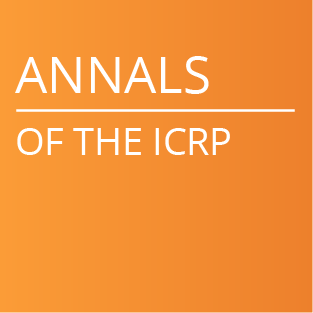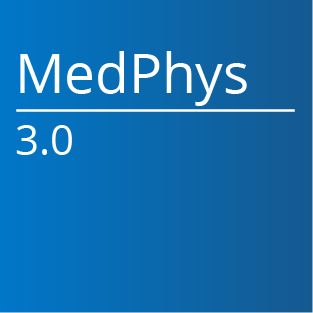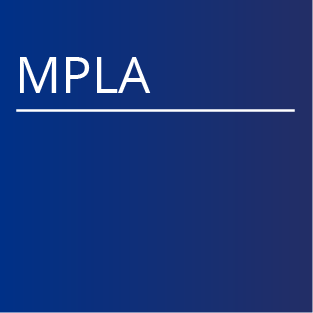- SCOPE OF PRACTICE OF CLINICAL MEDICAL PHYSICS
- STATEMENT OF BASIC RESPONSIBILITY
The essential responsibility of the Qualified Medical Physicist's clinical practice is to assure the safe and effective delivery of radiation to achieve a diagnostic or therapeutic result as prescribed in patient care. The medical physicist performs or supervises the technical aspects of procedures necessary to achieve this objective. The responsibilities of the medical physicist include: protection of the patient and others from potentially harmful or excessive radiation; establishment of adequate protocols to ensure accurate patient dosimetry; the measurement and characterization of radiation; the determination of delivered dose; advancement of procedures necessary to ensure image quality; development and direction of quality assurance programs; and assistance to other health care professionals in optimizing the balance between the beneficial and deleterious effects of radiation; and compliance with applicable federal and state regulations.
- DEFINITIONS
3.1 Medical Physics is that branch of physics that is associated with the practice of medicine. The term Medical Physics, as it is used here, includes diagnostic medical physics, therapeutic medical physics, nuclear medical physics, and medical health physics.
3.2 Radiation includes both ionizing and non-ionizing radiation such as electromagnetic radiation, particulate radiation, and ultrasound. These modalities, used for diagnostic or therapeutic purposes when prescribed by a properly qualified practitioner, are herein described as radiological procedures.
3.3 The Practice of Medical Physics means the use of principles and accepted protocols of physics to assure the correct quality, quantity, and placement of radiation during the performance of a radiological procedure.
3.4 Practitioner means a doctor of medicine, osteopathy, podiatry, dentistry, or chiropractic who is licensed to practice their medical specialty and who either prescribes or utilizes radiological procedures for other persons.
3.5 Quality Assurance consists of activities designed to assure adequate quality, precision and accuracy in the uses of radiation and reproducibility of the procedures and systems used.
3.6 Qualified Medical Physicist (QMP) is an individual who is competent to practice independently in one or more of the subfields of medical physics, and meets the criteria set forth in the Definition of a Qualified Medical Physicist ( AAPM Professional Policy 1). In addition, a QMP must hold a professional medical physics license where required and should uphold the AAPM Code of Ethics ( AAPM Professional Policy 24).
- SPECIFICS OF PRACTICE
This document summarizes the tasks for which medical physicists are uniquely qualified. Additionally, medical physicists participate in many procedures in the clinic not listed here, depending on the specifics of clinic operation. A scope of practice consistent with the aforementioned practice guidelines for the different sub-specialties of medical physics is outlined below. The medical physicist is an essential member of the patient care team that includes Physicians, Nurses, Radiologic Technologists, Dosimetrists, Radiation Therapists, Engineers and QA personnel. In every case, the medical physicist subscribes to the AAPM Code of Ethics (AAPM Professional Policy 24).
4.1 Supervision
A medical physicist who does not meet the criteria to be considered a QMP should work under the supervision of a QMP, with the level of supervision appropriate to the task as described in AAPM Professional Policy 18: " Statement on the description of involvement of Medical Physicists in clinical procedures".
4.2 Collaboration
Collboration is essential in the performance of Medical Physics duties, and such collaboration includes, but not limited to:
- Consultation with Practitioners and Allied Health Personnel for treatment planning dose delivery.
- Consultation with Practitioners to assure accurate radiation dose to a specific patient.
- Consultation iwth Practitioners and Allied Health Personnel to address the balance between radiation dose and image quality for patient care.
- Consultation and instruction regarding radiation safety to patients, staff, and for general public radiation safety.
- Consultation and collaboration with research and development scientists and equipment manufacturers to guide the development and improvement of products and procedures designed to ensure quality patient care and radiation safety.
4.3 The scope of practice of the QMP may include, but is not limited to:
4.3.1 General
- Serves as the institution's Radiation Safety Officer,
- Serves as a member of the institution's Radiation Safety Committee,
- Serves on other institution committees including but not limited to Risk Management, Quality Assurance, and Professional staff.
4.3.2 For Diagnostic Medical Physics
- Develop specifications for imaging equipment and diagnostic radiation detectors
- Develop procedures for the initial and continuing evaluation of imaging equipment and diagnostic radiation detectors
- Provide evidence of compliance of imaging equipment with regulatory and accreditation agency rules and recommendations
- Measure and characterize of medical radiation from imaging equipment prior to clinical utilization
- Perform acceptance testing, evaluation and commissioning of imaging equipment and/or their associated computer systems, algorithms, data, and output
- Develop and/or evaluate of policies and procedures related to the appropriate clinical use of radiation for imaging purposes
- Review diagnostic imaging dosimetry information noted in patient records
- Develop and manage of a comprehensive Quality Management Program that monitors, evaluates, and optimizes imaging processes
- Consult in the development and/or evaluation of a comprehensive clinical radiation safety program in diagnostic imaging
- Consult on patient or personnel radiation dose and associated risks
- Provide diagnostic imaging physics training for medical practitioners and other health-care providers
- Provide consultation to assure an optimized balance between image quality and patient dose
- Provide institutional consultation on program development in diagnostic imaging
- Plan and specify of thickness, material, and placement of shielding needed to protect patients, workers, the general public and the environment from radiation produced incident to diagnosis or treatment of humans
- Assess and evaluate of installed shielding designed to protect patients, workers, the general public and the environment from radiation produced incident to diagnosis or treatment of humans
- Participate in informatics development and direction
- Apply other medical applications of physics as appropriate to safely carry out diagnostic radiologic procedures
- Develop and apply Medical Health Physics procedures associated with the practice of Diagnostic Radiology
4.3.3 For Nuclear Medical Physics
- Develop nuclear imaging and radioactivity measurement equipment specifications
- Develop procedures for the initial and continuing evaluation of nuclear imaging and radioactivity measurement equipment
- Provide evidence of compliance of nuclear imaging and radioactivity measurement equipment with regulatory, professional and accreditation agency rules and recommendations
- Measure and characterize of medical radiation from radiopharmaceuticals prior to clinical utilization
- Perform acceptance testing, evaluation and commissioning of nuclear imaging and radioactivity measurement equipment and their associated computer systems, algorithms, data, and output
- Evaluate nuclear imaging and radioactivity measurement procedures prior to clinical use
- Develop and/or evaluate of policies and procedures related to the appropriate clinical use of radiation for nuclear imaging, radiopharmaceutical therapy and/or radioactivity measurement purposes
- Review of radiopharmaceutical dosimetry information noted in patient records
- Develop and manage of a comprehensive Quality Management Program that monitors, evaluates, and optimizes nuclear imaging, radiopharmaceutical therapy and radioactivity measurement processes
- Develop and/or evaluate a comprehensive clinical radiation safety program in nuclear medicine
- Provide consultation on patient or personnel radiation dose and associated risks
- Provide institutional consultation on program development in medical nuclear imaging and radiopharmaceutical therapy
- Provide medical nuclear physics training for medical practitioners and other health-care providers
- Provide of consultation to assure an optimized balance between image quality and patient dose
- Plan and specify thickness, material, and placement of shielding needed to protect patients, workers, the general public and the environment from radiation produced incident to diagnosis or treatment of humans
- Assess and evaluate installed shielding designed to protect patients, workers, and the general public from radiation produced incident to diagnosis or treatment of humans
- Participate in informatics development and direction
- Apply other medical applications of physics as appropriate to safely carry out nuclear medicine procedures
- Develop and apply Medical Health Physics procedures associated with the practice of Nuclear Medicine
4.3.4 For Therapeutic Medical Physics
- Develop of equipment specifications for radiation therapy treatment, brachytherapy, simulation, and radiation measurement
- Develop of procedures for the initial and continuing evaluation of radiation therapy treatment, brachytherapy, simulation, and radiation measurement equipment
- Provide evidence of compliance of equipment for radiation therapy treatment, brachytherapy, simulation, and radiation detection, with regulatory and accreditation agency rules and recommendations
- Measure and characterize medical radiation from radiation therapy treatment, brachytherapy, and simulation equipment prior to clinical utilization
- Perform acceptance testing, evaluation and commissioning of equipment used for external-beam therapy, brachytherapy, simulation, treatment-planning, and radiation detection; acceptance testing and evaluation of their associated computer systems, algorithms, data, and output
- Approve radiation oncology technical procedures prior to clinical use
- Develop and/or evaluate, in conjunction with the medical practitioner, policies and procedures related to the appropriate therapeutic use of radiation
- Develop and/or evaluate, with the medical practitioner, the dosimetric component of patients' treatment plans
- Review of radiation oncology dosimetry information noted in patient records
- Develop and manage a comprehensive Quality Management Program that monitors, evaluates, and optimizes radiation oncology processes
- Develop and/or evaluate a comprehensive clinical radiation safety program in radiation oncology
- Direct the Radiation Oncology Physics program to include the technical direction of staff responsible for treatment planning, machine maintenance and repair and other physics support staff.
- Provide consultation on patient or personnel radiation dose and associated risks
- Provide radiation oncology physics and radiation dosimetry training for medical practitioners and other health-care providers
- Provide consultation to assure accurate radiation dose delivery
- Provide institutional consultation on program development in radiation oncology
- Plan and specify thickness, material, and placement of shielding needed to protect patients, workers, the general public and the environment from radiation produced incident to diagnosis or treatment of humans
- Assess and evaluate installed shielding designed to protect patients, workers, and the general public from radiation produced incident to diagnosis or treatment of humans
- Use imaging procedures as they pertain to the simulation, treatment planning and treatment delivery in therapeutic radiologic procedures.
- Involve in informatics development and direction
- Apply other medical applications of physics as appropriate to safely carry out therapeutic radiologic procedures
- Develop and apply Medical Health Physics procedures associated with the practice of Therapeutic Radiology
4.3.5 For Medical Health Physics
- Plan and specify thickness, material, and placement of shielding needed to protect patients, workers, the general public and the environment from radiation produced incident to diagnosis or treatment of humans
- Assess and evaluate installed shielding designed to protect patients, workers, and the general public from radiation produced incident to diagnosis or treatment of humans
- Develop radiation protection equipment specifications
- Develop procedures for the initial and continuing evaluation of radiation protection equipment and procedures
- Monitor compliance with radiation protection, policies and procedures, regulations, accreditation organization(s) standards, and national recommendations
- Perform acceptance testing and commissioning of radiation protection equipment and devices and commissioning of facilities
- Perform acceptance testing and evaluation of radiation protection computer systems, their algorithms, data, and output
- Evaluate radiation safety procedures prior to use
- Development, manage and/or evaluate a radiation safety program
- Provide radiation-protection training for medical practitioners, and other health-care providers
- Determine presence, evaluate and assess any radiological hazard resulting from the use of ionizing radiation or radioactivity for compliance with appropriate regulatory and accreditation agencies
- Fulfill the duties and responsibilities of a medical Radiation Safety Office/Protection Supervisor.
|



















